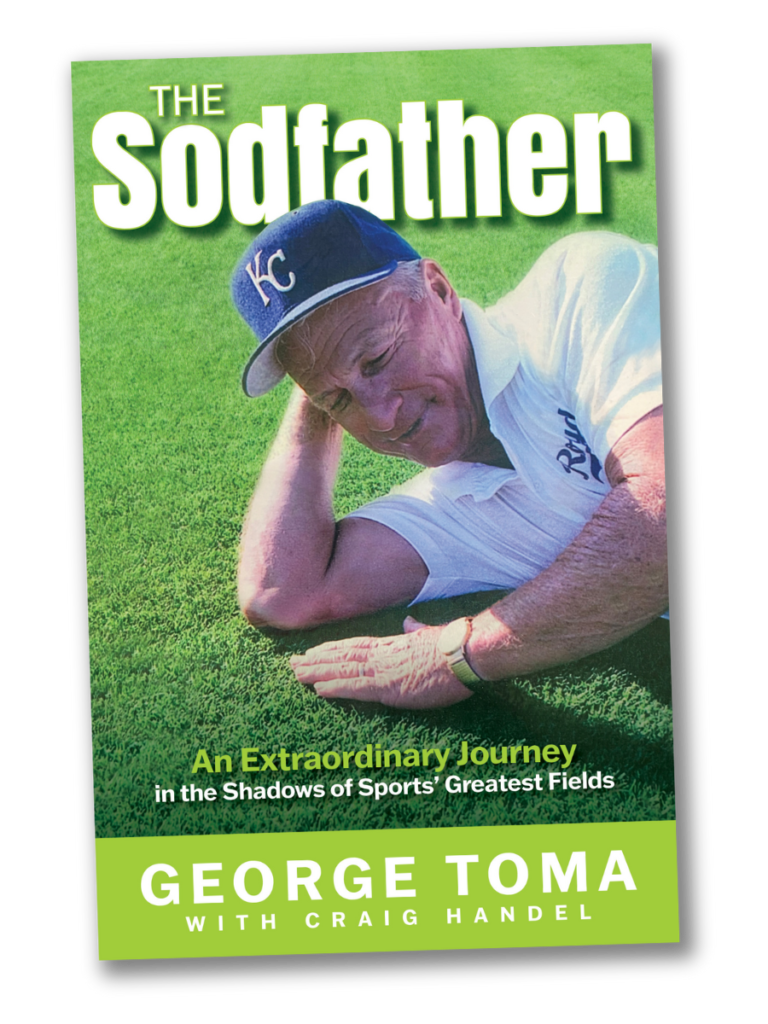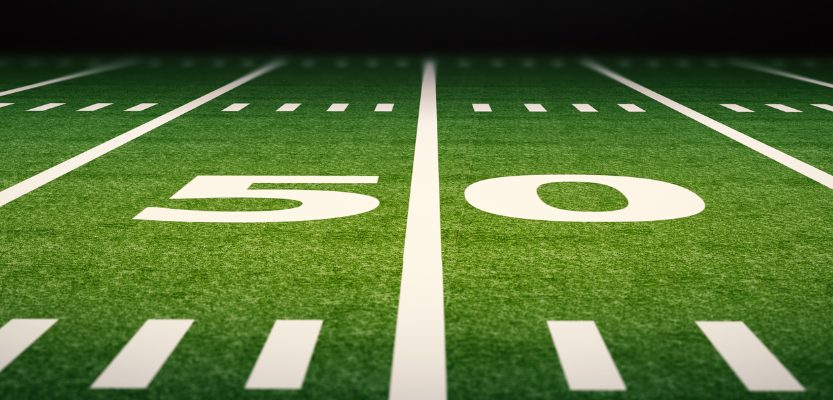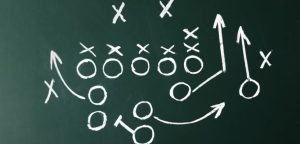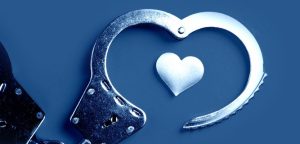When the Sports Field Management Association met for its convention from Jan. 16 to 19, 2023, in Salt Lake City, Utah, the speakers included NFL Players Association executive director DeMaurice Smith and myself.
Every time DeMaurice and I saw each other, he’d give me a hug and thank me for what I had done for the players. For quite a few years, both DeMaurice and Commissioner Roger Goodell gave me hugs at the Super Bowl. Back then, I was hot shit.
“A guy like George pours his heart, sweat and blood in the fields,” DeMaurice Smith said. “I love the guy; he’s a master of his craft. He’s also one of the few authentic people.”
Smith, the keynote speaker at the SFMA convention, talked about having better fields for the players. He said over the past couple of years, artificial turf fields were substandard.
When I spoke, I apologized for not getting the job done with Super Bowl LVI in 2022.
I had warned and warned and warned the NFL. Ed Mangan. Phil Bogle. Dave Gardi. Roger Goodell. If nothing else, I didn’t want a repeat in Super Bowl LVII in 2023.
There were times when I wondered:
Where was the NFLPA?
Where were the NFL owners?
Where were the NFL coaches?
When DeMaurice Smith and I spoke afterwards, I asked him where these people were when there were field problems in past years.
He told me, “It’s just politics.”
DeMaurice Smith gave some insight into what it’s like dueling the NFL and the level of confrontation needed. It’s similar to the approach of former Major League Baseball Players Association executive director Donald Fehr. Fehr once said he wanted the owners to think he was so crazy he’d be willing to do anything for the players.
“The way I would explain it to the players and the league, I have to be willing to burn the house down with me in it,” DeMaurice Smith said. “That’s the only way to achieve some balance.
“One of the reasons I love George is he’s the embodiment of a dichotomy. It’s real simple. Either the league cares about having the safest field possible and how does it cultivate that and hire the best people to do that? On the flip side, they want to make the players or union fight for better fields. It’s two different ways of looking at the world. George and I, we live in that former world. The obligation by the NFL should be out of duty. It shouldn’t be out of accountability. I spent a lot of time fighting that. And you literally have to fight for everything.”
Little did we know that we would have déjà vu all over again less than a month later for Super Bowl LVII at State Farm Stadium in Glendale, Ariz. It also would be the last time DeMaurice Smith and I would be at the big game in an official capacity.
I arrived in Arizona later than usual because of the SFMA conference, but I was getting calls that there were problems.
Bad sod. Bad decisions. My greatest nightmares were being realized. I had been making SOS calls with nobody answering. Now I know how the people on the Titanic felt.
Two companies would sod the practice fields for the Kansas City Chiefs and Philadelphia Eagles.
The Chiefs, practicing at Arizona State, would have West Coast Turf, which had its sod used for a ninth Super Bowl. Travis Hogan, the Kansas City Chiefs’ director of turf management, would oversee the field with the help of Josh Lentz. They didn’t want the field sodded.
The Eagles, practicing at the Arizona Cardinals’ practice facility, would get Evergreen Turf. Andy Levy, the Cardinals’ turf director who does a helluva job, would oversee the field.
Levy had a practice field as level as a pool table. He didn’t want the field resodded, either.
In both instances, Phil Bogle, NFL director of game operations, overruled them. As a result, the Eagles didn’t get the practice field they expected. There were a lot of low spots.
That was the start of a number of problems with Super Bowl LVII.
We haven’t even gotten to the game field.
Four Bad Miscalculations
In my opinion, Bogle, Eddie Mangan and his main guys made four crucial mistakes.
It’s customary for the field supervisor to regularly check on the turf monthly leading up to the Super Bowl.
West Coast Turf’s Jay Danek and Danielle Scardino told me Eddie never went to West Coast Turf to see how it looked. As I’ve said many times, he didn’t like West Coast Turf. Instead, I heard Bogle checked on West Coast Turf twice.
What does Phil Bogle know about turf? Not enough to know whether the turf is good or not. And the West Coast Turf people are good; they’ll do what you ask. But they need guidance, not a cursory, “Looks good to me.”
If somebody like Mike Albino or Will Schnell would’ve checked on the sod over the months, the turf would’ve been in much better shape. However, Mike had no interest in working for the NFL, saying, “It’s not about the NFL or money. It’s about integrity.”
Three to four weeks before the Super Bowl, the grounds crew and I said we needed two sandings done. We also needed a bigger roller. Travis Hogan does it differently, and the Travis Hogan way would’ve made a difference.
Doing those two tasks would’ve made the field more level.
Eddie Mangan wouldn’t do it.
Instead, he had new sod put over the field. That made it look like a giant washboard, like a sea with waves where there’s a lot of humps and bumps.
Technology has led to laser grading. A person drives a tractor, and the laser will show the low spots. I like to put a string around a person’s leg, then go to one end of the field. At the other end of the field is another person who has a string around his or her shoe. Tighten the string up and the low spots will be made quite apparent. I also used a nasal spray bottle to show some areas with 2½-inch low spots, which is about the length of a nasal spray bottle.
Eddie didn’t grasp the significance of using a cleat tester.
For years, I had used a cleat tester. I actually made one for $5 by welding three nails to a piece of metal. The cleat tester helped determine how much give there would be with the sod.
John Mascaro in Tallahassee used my design to make cleat testers that now go for $400 and $1,200.
Lee Keller, who’s in charge of all the equipment on our 60-foot trailer, couldn’t find one. Now one of those $5 cleat testers can be made in less than an hour. Field service director Nick Pappas said he’d have one in a week.
When the cleat tester couldn’t be found, I told Eddie to call Mascaro and have cleat testers shipped for Travis and Andy. Eddie said he wasn’t going to spend $1,000 on cleat testers.
“Bullshit,” I said as I started to steam up.
If Eddie had told Mascaro that it was for me, Mascaro probably would’ve sent it to us free of charge.
A week before the Super Bowl, still no cleat tester. I told Mangan in the morning, “If there’s not a cleat tester by 1 p.m., I’m going home if you people don’t give a shit.”
Two hours later, the cleat tester appeared, like magic. You thought Eddie was Houdini or David Copperfield.
The cleat tester has a torque wrench. When you pull it tight, it shows how many pounds per square inch before a divot is pulled.
Our first test showed the field was in good shape.
But when we went to re-check the turf, the cleat tester had disappeared again, and we didn’t re-test.
“It bothered me that in George’s later years, some of the younger generation weren’t paying the same attention to him,” Mike Albino said. “He would call on me for additional input on big issues and I would trouble shoot for him. When I would arrive and come up with a solution, I would tell them, “George would have told you the same thing.”
After a few more days of tug-of-war, the grounds crew felt powerless after talking to Mangan and Bogle. They felt they could do nothing more. They had what I called a peaceful mutiny. Many of them told Bogle that they would oversee the turf for Super Bowl LVIII the next year. They didn’t want Mangan involved.
Four days before the Super Bowl, Wednesday morning, Mangan’s crew watered the field outdoors on the outdoor platform or trays, then immediately brought it inside the stadium. What should’ve been done was that the platform/trays should’ve stayed out in the sun where they would’ve dried. Instead, they didn’t get nearly enough sunlight. No good.
Mangan and his crew laid tarp and woven geotextile over the field to protect it from rehearsals for the pregame and halftime shows. Normally, this is a good strategy to protect the field. But if the field is damp or wet already, after those rehearsals, you’ve got problems.
When we took off the turf and geotextile, there was a 30-by-60 foot patch of grass that was mud. It was like a black stamp was imprinted on the grass.
The grass also started to die. And when a living thing dies, it rots. And when it rots, it stinks.
So Mangan and his crew had a field that not only looked bad but also smelled bad.
After saying the sod needed to be replaced, I chewed out Mangan for his sloppy approach that destroyed the field. It was the safety of the players that I was most concerned about.
I then told Mangan he lied to me.
I told him he had lied to me about stealing sod at Super Bowl XLI. When he said he didn’t steal the sod, I told him I heard the whole story from Eddie Woerner.
Mangan’s sun-tanned face went white.
His stubbornness and lack of accountability were catching up with him. And I couldn’t protect him. I wouldn’t protect him anymore.
Slip And Slide
We just couldn’t turn around the field. It was like a runaway train. I saw it happening the year before on the practice fields. I saw it happening in the weeks leading up to Super Bowl LVII. And I saw it happening with just hours to go.
Before the game, DeMaurice Smith had his photographer take pictures of the field. He said they were filed with the NFL Players Association field safety department but not shared with the league because of his frustration with his own players.
“I’m never going to bargain with the league without the leverage of knowing players are willing to do something,” he said. “The most dangerous thing – and we’ll use that turf as an example – is if you call up the league for a bargaining session and say, ‘Look how bad this field was,’ and the league says, ‘Whatever,’ and then you do nothing. They’ve called your bluff. And you’re weaker.
“The union is a democracy. The players have to decide what they want and what they’re willing to do. You also have to lead from the front. What I found thrilling and exhausting is that you’re not only battling the owners but you have to pull your guys up the hill.”
Throughout the game, players on both sides could be seen slipping and sliding.
There’s a short video with follies music in the background on YouTube showing Kansas City quarterback Patrick Mahomes slipping while scrambling, teammate Isiah Pacheco slipping after scoring a touchdown, Philadelphia kicker Jake Elliott losing his footing after a kickoff and teammates Brandon Graham and Haason Reddick stumbling during pass rushes.
I found nothing comical about it. This game was like reliving the nightmare of Super Bowl 50.
Philadelphia Eagles quarterback Jalen Hurts, who still ran for 70 yards, changed from Jordan 11 cleats to Jordan 1 cleats. A number of his teammates also switched cleats.
After the game, several players voiced their displeasure.
“I’m not gonna lie, it was the worst field I ever played on,” Reddick said.
Eagles offensive lineman Jordan Mailata described the conditions as “pretty slippery,” similar to ”playing on a water park.”
“I changed my cleats and right before the second half wore the different ones,” Philadelphia tight end Dallas Goedert said after the game. “The second half, you know, the field was tearing up a little bit, but, you know, once again, we’re playing on the same field as the Chiefs.”
The NFL’s comment?
“The State Farm Stadium field surface met the required standards for the maintenance of natural surfaces, as per NFL policy,” it said the day after the game. “The natural grass surface was tested throughout Super Bowl week and was in compliance with all mandatory NFL practices.”
For more than 15 years, I took the hits for Eddie Mangan, Mark Paluch, Mike Kensil, Phil Bogle, Dave Gardi, Troy Vincent, Roger Goodell and the NFL. And I did it while sounding genuine with the media.
But with the combination of Mangan not listening to his crew and making mistake after mistake and NFL officials not taking him to task, I was building up like a volcano.
And the fact that Goodell hadn’t responded to the letter I had written to him a year earlier increased the pressure.
I was ready to erupt. This was one of the five worst fields in Super Bowl history.
It already bothered me that hard-working people such as Andy Levy, Travis Hogan and Heather Nabozny, the head groundskeeper for the Detroit Tigers, were going to get criticized.
It bothered me that West Coast Turf would get hammered again.
And it really bothered me that when I told Bogle that the NFL should pay to have the Arizona State field resodded after the Super Bowl, he said, “That’s not my problem. It’s an ASU problem.”
That really ticked me off, and I let Bogle have an earful.
Levy gave the NFL a pool table, and the NFL gave Levy a washboard.
You don’t do what Bogle did. It wasn’t right.
Mount Toma Erupts
When I told Bogle that the national media wanted to talk to me, he said, “Tell them to call me.”
But the final straw was that Eddie Mangan didn’t own up to his mistakes. Instead, he said the cause of the problem was rye grass. Dr. Yanqi Wu, a professor of grass breeding and genetics at Oklahoma State, said it was a combination of rye grass and moisture.
Now, I get a call to come on The Dan Le Batard Show; and when I came on, I erupted.
“And yes, Mr. Mangan, don’t lie!” I said. “In your interviews with Phil Bogle, you lied. You blamed the rye grass for the cause of that disaster. Bullshit. I have used rye grass for 27 years, and it wasn’t any problem. And those first 27 years of using rye grass, I only spent $1,000 on the field. Now we’re spending $700,000 to $800,000 on the field and giving the players a horseshit field? That’s bullshit. And I’m mad about it.”
My earpiece fell out for most of the interview, so I just kept going for about 15 minutes. I outlined problems over the years. I blamed Troy Vincent. I blamed Roger Goodell. And I blamed Eddie Mangan.
“Eddie, you gotta be a better man. … You’re making over $100,000 a year; your wife has an attractive (NFL) salary. … I’ve been doing this the last 17 years. Roger Goodell is paying me $15 to $18 an hour. Thanks Roger Goodell for giving the groundskeepers a raise. Travis Hogan is now making $18 an hour.
“I’m for the safety of the players. My grandmother taught me to help. I’d do this job for nothing. I love what I’m doing. I’ll fight anybody up to you, Mr. Goodell, to give a safe playing field, and you’re not doing it. Quit the bullshit.”
Le Batard’s staff gave me a standing ovation as I said those words.
I also told ESPN that Super Bowl LVII would be my last.
“I can’t take it anymore,” I said, adding that I wasn’t pleased with how the league had responded to field issues in the past. ”Me and the league are finished. They can’t tell me what to do anymore. We’re done.”

BUY YOUR COPY TODAY!!
This blog post is a chapter excerpt from the book The Sodfather.




